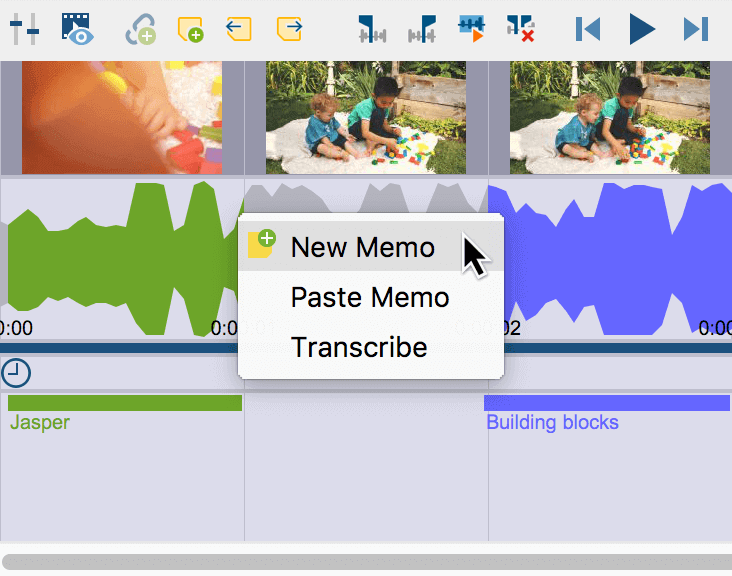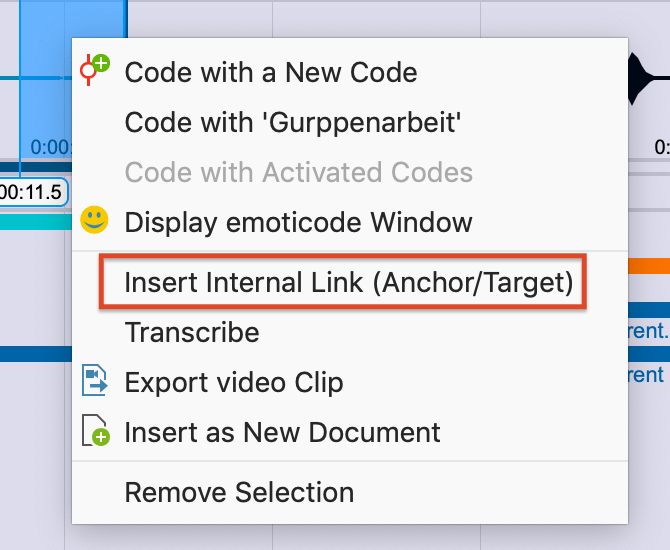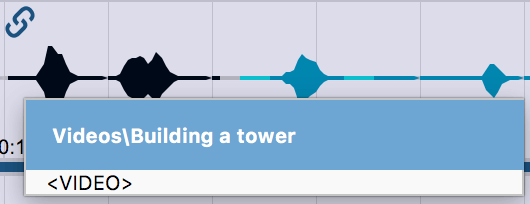Attaching memos to time positions in videos
As well as coding them, you can also add memos to media files to make notes or record your thoughts, hypotheses, interpretations, and much more about particular time positions. The memos can also be used to subdivide a video file so that you can quickly "navigate" through the video.
You can attach memos for notes to any playback position. To attach a new memo,
- Right-click a position of the waveform
- Or click the button New memo
 in the Multimedia Browser toolbar or
in the Multimedia Browser toolbar or - Or use the keyboard shortcut Alt+⇧+M (Windows) / option ⌥+⇧+M (Mac)

You can jump back and forth between the memos of a media file at any time by using the Previous / Next Memo icons or the associated keyboard shortcuts ⇧ + F3 and F3 in Multimedia Browser toolbar.
Setting internal links in video clips
Internal links in MAXQDA are used to connect two parts of the project, for example a part of a video with an interview section. This creates a hyperlink, which you can click to jump back and forth between the linked sections.
Follow these steps to set an internal link in a video file:
- Select part of a video in the Multimedia Browser.
- Right-click on the marker and select Insert Internal Link (Anchor/Target). Alternatively, you can use the key combination Ctrl+L (Windows) or cmd+L (Mac). This sets the start of the link.
- Select another sequence in the video and repeat step 2. This sets your link target.

In the Multimedia Browser a link icon will now appear in the waveform, which you can click to jump to the linked section.

You can connect a video clip to another video clip or connect a video clip to a text section in a document or memo. For example, a passage of text that talks about a particular video scene can be linked to that video scene via an internal link.
